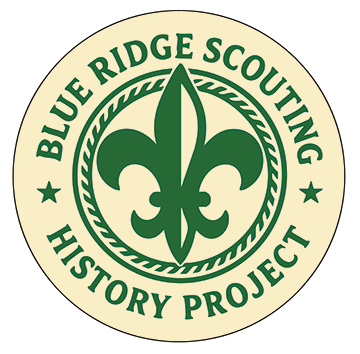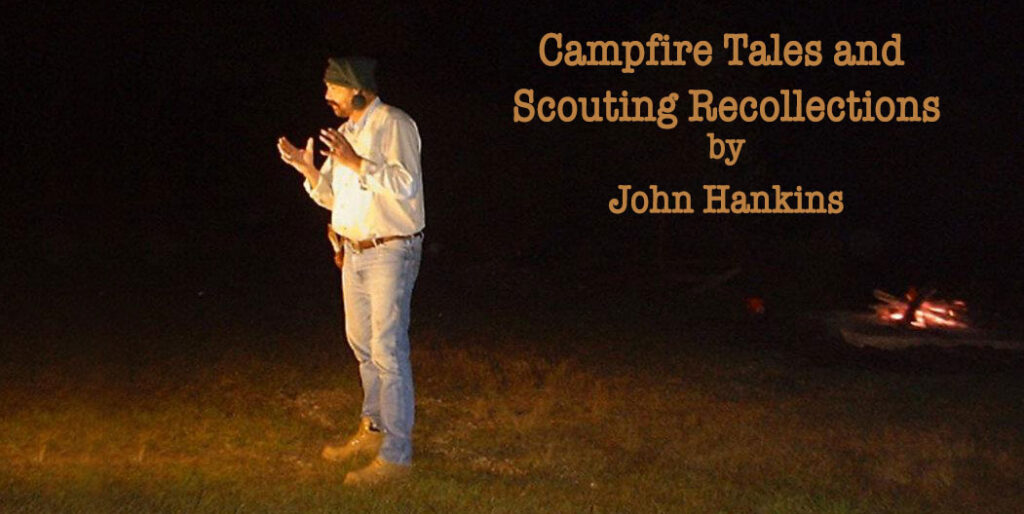With permission of the author, these stories by noted scouter and storyteller John Hankins are featured here at Natahwop.Org. He shares these as part of the history and lore of Camp Powhatan, Camp Ottari, and the High Knoll Trail, where he spent many years of his youth. John has an incomperable first-hand knowledge of this scout reservation, as he blazed most of the original trails for High Knoll, and has hiked the rest of them several times over.
John Hankins grew up in Troop 50 (Woodlawn United Methodist Church) in Roanoke, VA. He attended Camp Powhatan as a young scout, then worked at Philmont Ranch as a ranger. He returned to the reservation to serve on camp staff from 1968 to 1978. He was a legendary naturalist who could interpret the outdoors unlike any other. As a teacher, John often relied on the element of excitement to get his point across. His weekly lectures at the nature lodge, for example, introduced scouts to either a live rattlesnake or copperhead – usually dangling on a stick within a few feet of the front row.
John and several others first envisioned the now-legendary High Knoll trail system. They took it to council leadership for prospective funding, where the idea gained several key advocates (but no funding). John recalls how – in those days – they couldn’t pay the staff with money, so they gave them patches. The High Knoll Trail would go on to become one of the best outdoor programs in the country.
John applied in 1979 for the open job of Camp Ranger, but the council said he needed more experience in that post. With his rejection letter in hand, he was immediately hired by Camp Chickohominy, and then by Camp Brady Saunders where he served for 33 years as Camp Ranger. John moved with his wife, Cheri, to West Virginia where they enjoyed the spoils of retirement: grandchildren, travel, and the great outdoors. As of 2024, they are living on the outskirts of Richmond where they can be closer to family.
(“Hankins Tales” are shared here by permission of the author. Each story is copyrighted by John Hankins, and may not be reproduced in any form without his express written permission.)








